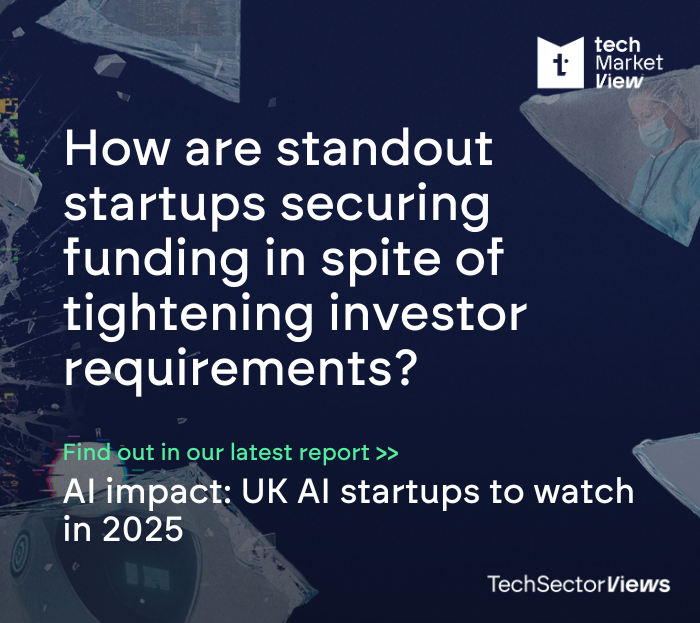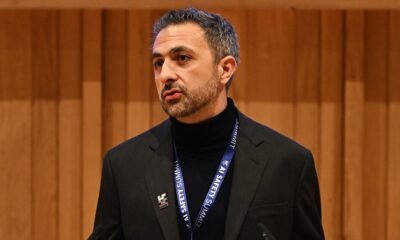AI Research
Project Ire: Microsoft Unveils Autonomous AI Malware Hunter

Microsoft on Tuesday revealed Project Ire, a new AI agent that autonomously reverse-engineers and classifies malicious software. The move escalates the AI cybersecurity arms race, positioning Microsoft’s malware hunter against Google’s “Big Sleep” agent, which focuses on finding software flaws.
Developed by Microsoft’s research and security teams, Project Ire aims to automate the complex work of malware analysis. This allows security teams to scale their defenses against sophisticated, AI-driven attacks and frees up human experts to focus on the most critical threats.
The announcement underscores a strategic divergence in how tech giants are weaponizing AI for defense. While Google hunts for vulnerabilities in code, Microsoft is now targeting the malicious binaries themselves.
Project Ire: Automating the ‘Gold Standard’ of Malware Analysis
Microsoft says the new system “automates what is considered the gold standard in malware classification: fully reverse engineering a software file without any clues about its origin or purpose.” The prototype emerged from a collaboration between Microsoft Research, Microsoft Defender Research, and Microsoft Discovery & Quantum, combining AI research with operational security expertise.
The agent operates by using advanced language models, available through Azure AI Foundry, to direct a suite of specialized tools. Its architecture allows it to reason at multiple levels, from low-level binary analysis to high-level interpretation of code behavior, distinguishing it from tools that simply match patterns.
The analysis process begins with a triage, where automated tools identify the file type and structure. From there, the system reconstructs the software’s control flow graph using open-source frameworks like Ghidra and angr. This creates a logical map of the program’s execution path, forming the backbone of the AI’s memory model.
Through iterative function analysis, the AI calls specialized tools to identify and summarize key functions. Each result feeds into a “chain of evidence,” a detailed, auditable trail that shows how the system reached its conclusion. This log is crucial for human review and system refinement.
To ensure its conclusions are sound, Project Ire uses a validator tool that cross-checks its claims against a knowledge base of expert statements from Microsoft’s own malware engineers. In one instance, it was the first system at Microsoft—human or machine—to author a threat report strong enough to trigger an automatic block on its own.
In early tests on public Windows drivers, the system was highly accurate, achieving 98% precision and incorrectly flagging safe files in only 2% of cases. This low false-positive rate suggests clear potential for deployment in security operations.
When tested against nearly 4,000 “hard-target” files that had stumped other automated systems, it achieved 89% precision and 26% recall, with a 4% false positive rate. While recall was moderate, its accuracy on these difficult cases highlights its potential to augment human analysis.
The AI Arms Race in Cybersecurity
Project Ire’s debut arrives amid a broader, intensifying competition in AI-driven security. Its focus on malware classification contrasts sharply with Google’s Project Big Sleep, which has recently gained attention for autonomously discovering 20 new vulnerabilities in widely used open-source software like FFmpeg and ImageMagick.
Google’s agent, a product of its DeepMind and elite Project Zero teams, has shown a rapid and deliberate evolution. The project first proved its potential in late 2024 by uncovering a bug in the SQLite database engine. The stakes were raised considerably in July 2025, when Google revealed Big Sleep had proactively neutralized an imminent threat, CVE-2025-6965, in a direct race against attackers.
Unlike traditional methods like fuzzing, Big Sleep uses LLMs for deep root-cause analysis, simulating a human researcher’s approach. Google’s vice president of engineering, Royal Hansen, celebrated the findings as “a new frontier in automated vulnerability discovery.”
This trend is not limited to just two players. A growing ecosystem of AI security tools from startups and established firms is emerging. Other tech giants are building complementary systems. Meta, for instance, recently announced AutoPatchBench to evaluate how well AI can automatically fix bugs, alongside LlamaFirewall, a tool designed to prevent AI models from generating insecure code in the first place. Meanwhile, tools like RunSybil and XBOW are also making headlines, with XBOW recently topping a HackerOne leaderboard.
However, this innovation is a double-edged sword. The same AI models used for defense can also perpetuate insecure coding practices. Recent academic research revealed that many LLMs, trained on public code from GitHub, have learned to replicate old bugs, a phenomenon dubbed the “poisoned LLM” problem. This creates a vicious cycle where the tools meant to build the future are inheriting the mistakes of the past.
The dual-use nature of AI is forcing a rapid evolution in defensive strategies, as AI-driven attacks become more sophisticated. As Sheetal Mehta of NTT DATA noted in a related context, “fragmented security tools cannot keep up with today’s automated attacks.” This reflects a growing consensus on the need to harness AI for defense while mitigating its potential for misuse.
As Microsoft’s Brad Smith previously stated, “Our goal needs to be to keep AI advancing as a defensive tool faster than it advances as an offensive weapon.” The development of specialized agents like Ire and Big Sleep represents a critical front in that battle.
Balancing Automation with Human Expertise
While automation promises to help overwhelmed security teams, it also creates new challenges. A key industry concern is “AI slop,” a term for the flood of low-quality or irrelevant bug reports generated by automated tools.
This can fatigue the volunteer maintainers of open-source projects. As Vlad Ionescu, co-founder of AI security startup RunSybil, told TechCrunch, “that’s the problem people are running into, is we’re getting a lot of stuff that looks like gold, but it’s actually just crap.”
To counter this, both Microsoft and Google stress that human expertise remains indispensable. A Google spokesperson, Kimberly Samra, confirmed that “to ensure high quality and actionable reports, we have a human expert in the loop before reporting, but each vulnerability was found and reproduced by the AI agent without human intervention.”
Microsoft echoes this sentiment. Mike Walker, a Research Manager at Microsoft, explained that early experiences with Project Ire showed “[what we learned from those instances is] that we can leverage the complementary strengths of both humans and AI for protection.” The system’s detailed evidence trail is designed specifically to facilitate this human-machine collaboration.
Microsoft plans to integrate the prototype into its security products as “Binary Analyzer.” The company’s ultimate vision is to detect novel malware directly in memory, scaling its autonomous capabilities to protect billions of devices more effectively.
AI Research
Marquis Who’s Who Honors Sandra E. Cheung, PhD, for Expertise in Artificial Intelligence

Marquis Who’s Who Honors Sandra E. Cheung, PhD, for Expertise in Artificial Intelligence
Sandra E. Cheung promotes AI literacy and drives technology transformations
She aims to cultivate artificial intelligence literacy among communities across the United States by planting seeds of knowledge that encourage individuals to manage future technology challenges.
BELMONT, CA, September 10, 2025 /24-7PressRelease/ — Sandra E. Cheung, PhD, has been included in Marquis Who’s Who. As in all Marquis Who’s Who biographical volumes, individuals profiled are selected on the basis of current reference value. Factors such as position, noteworthy accomplishments, visibility, and prominence in a field are all taken into account during the selection process.
Dr. Cheung is a distinguished leader in the technology and engineering sectors. Inspired by the emergence of artificial intelligence in the technology sector, she launched AImpowered in 2025, and the nonprofit organization has since been dedicated to educating people on safe and effective use of AI. As the chief executive officer of the firm, she has been instrumental in shaping the organization’s mission to bridge the digital divide and promote AI literacy, and she manages project timelines, coordinates meetings, implements key strategies, and monitors performance. Dr. Cheung also oversees budget expenditures, ensures compliance, and expertly supports her associates in their innovative pursuits.
Through AImpowered, Dr. Cheung offers workshops tailored for both children and adults, emphasizing the importance of in-person interactions for those affected by technological barriers. She is particularly dedicated to supporting individuals who struggle with technology, equipping them with the necessary tools to navigate the evolving landscape of AI. Dr. Cheung is also proud to curate content that helps parents gauge the influence of AI on home and school environments and to promote advocacy for children’s education in this field.
Drawing from her own experiences raising children during the rise of mobile phones, Dr. Cheung aids parents in grasping contemporary challenges posed by rapid technological advancement. Additionally, she prioritizes platforms that empower current technology workers to harness AI in their work. Notably, Dr. Cheung’s efforts through AImpowered prepare both parents and professionals to thrive in an increasingly AI-driven world.
In her comprehensive role, Dr. Cheung relies on experience gained from a series of pivotal professional appointments. From 2021 to 2024, she was the chief of staff and head of operations, strategy and planning at Webex, where she held oversight of operational efficiency and strategic initiatives that supported the company’s growth in collaborative technologies. Between 2018 and 2020, Dr. Cheung excelled as the director of software engineering at Cisco, and her signature leadership was pivotal in driving software development projects that enhanced Cisco’s product offerings.
From 2012 to 2018, Dr. Cheung provided technology and management consulting services at Cadushi, advising organizations on optimizing their technological infrastructure and management practices. Additionally, during her tenure as the senior director of infrastructure engineering and production operations at Yahoo! from 2005 to 2012, she played a critical role in addressing a significant crisis related to data center capacity amid financial constraints. Drawing inspiration from Yahoo!’s engineers, she collaborated with leadership to drive innovation among the company’s teams, inspiring others to look beyond conventional methods and galvanizing teams around a shared vision.
Before joining Yahoo!, Dr. Cheung was the director of network planning, design and analysis at Covad from 2003 to 2005, before which she served as the director of network engineering at Covad Communications from 1998 to 2003. In these positions, she oversaw network infrastructure development and strategic planning. Dr. Cheung began her professional journey in 1994 as a senior member of technical staff at AT&T, where she thrived through 1998.
The pursuit of service opportunities prompted Dr. Cheung to accept an appointment as the co-chair of the engineering council at Founders Creative in 2025, through which she contributes her expertise to foster innovation within the organization. Her commitment to promoting and advancing women in various fields is reflected through her membership in Women in Collaboration and her substantial leadership tenure with the Girl Scouts; additionally, Dr. Cheung is a proud co-founder and the acting president of the Silicon Valley Ice Skating Association.
Dr. Cheung’s academic credentials are impressive and include a Bachelor of Science in computer science from Florida Institute of Technology, which she completed in 1988. She also holds a Doctor of Philosophy in computer science from the University of Florida, which she proudly earned in 1993. Dr. Cheung credits her adaptability and dedication to making a positive impact on others as central to her success across diverse personal and professional platforms.
Looking toward the future, Dr. Cheung aims to cultivate artificial intelligence literacy among communities across the United States by planting seeds of knowledge that encourage individuals to manage future technology challenges. She emphasizes education as a foundation that must extend throughout all stages of learning so that younger generations can navigate change without anxiety while remaining grounded in core human values. Through her initiatives, Dr. Cheung seeks to foster collaboration and help people embrace transformative advancements.
About Marquis Who’s Who®:
Since 1899, when A. N. Marquis printed the First Edition of Who’s Who in America®, Marquis Who’s Who® has chronicled the lives of the most accomplished individuals and innovators from every significant field of endeavor, including politics, business, medicine, law, education, art, religion and entertainment. Who’s Who in America® remains an essential biographical source for thousands of researchers, journalists, librarians and executive search firms around the world. The suite of Marquis® publications can be viewed at the official Marquis Who’s Who® website, www.marquiswhoswho.com.
# # #
AI Research
Manufacturing AI Alliance unites 1,000 industry, academic, research entities – 조선일보
AI Research
*NEW RESEARCH* AI Impact: UK AI startups to watch in 2025

© TechMarketView LLP 2007-2025: Unauthorised reproduction prohibited see full Terms and conditions.
-

 Business2 weeks ago
Business2 weeks agoThe Guardian view on Trump and the Fed: independence is no substitute for accountability | Editorial
-
Tools & Platforms4 weeks ago
Building Trust in Military AI Starts with Opening the Black Box – War on the Rocks
-

 Ethics & Policy1 month ago
Ethics & Policy1 month agoSDAIA Supports Saudi Arabia’s Leadership in Shaping Global AI Ethics, Policy, and Research – وكالة الأنباء السعودية
-

 Events & Conferences4 months ago
Events & Conferences4 months agoJourney to 1000 models: Scaling Instagram’s recommendation system
-

 Jobs & Careers2 months ago
Jobs & Careers2 months agoMumbai-based Perplexity Alternative Has 60k+ Users Without Funding
-

 Podcasts & Talks2 months ago
Podcasts & Talks2 months agoHappy 4th of July! 🎆 Made with Veo 3 in Gemini
-

 Education2 months ago
Education2 months agoMacron says UK and France have duty to tackle illegal migration ‘with humanity, solidarity and firmness’ – UK politics live | Politics
-

 Education2 months ago
Education2 months agoVEX Robotics launches AI-powered classroom robotics system
-

 Funding & Business2 months ago
Funding & Business2 months agoKayak and Expedia race to build AI travel agents that turn social posts into itineraries
-

 Podcasts & Talks2 months ago
Podcasts & Talks2 months agoOpenAI 🤝 @teamganassi






















